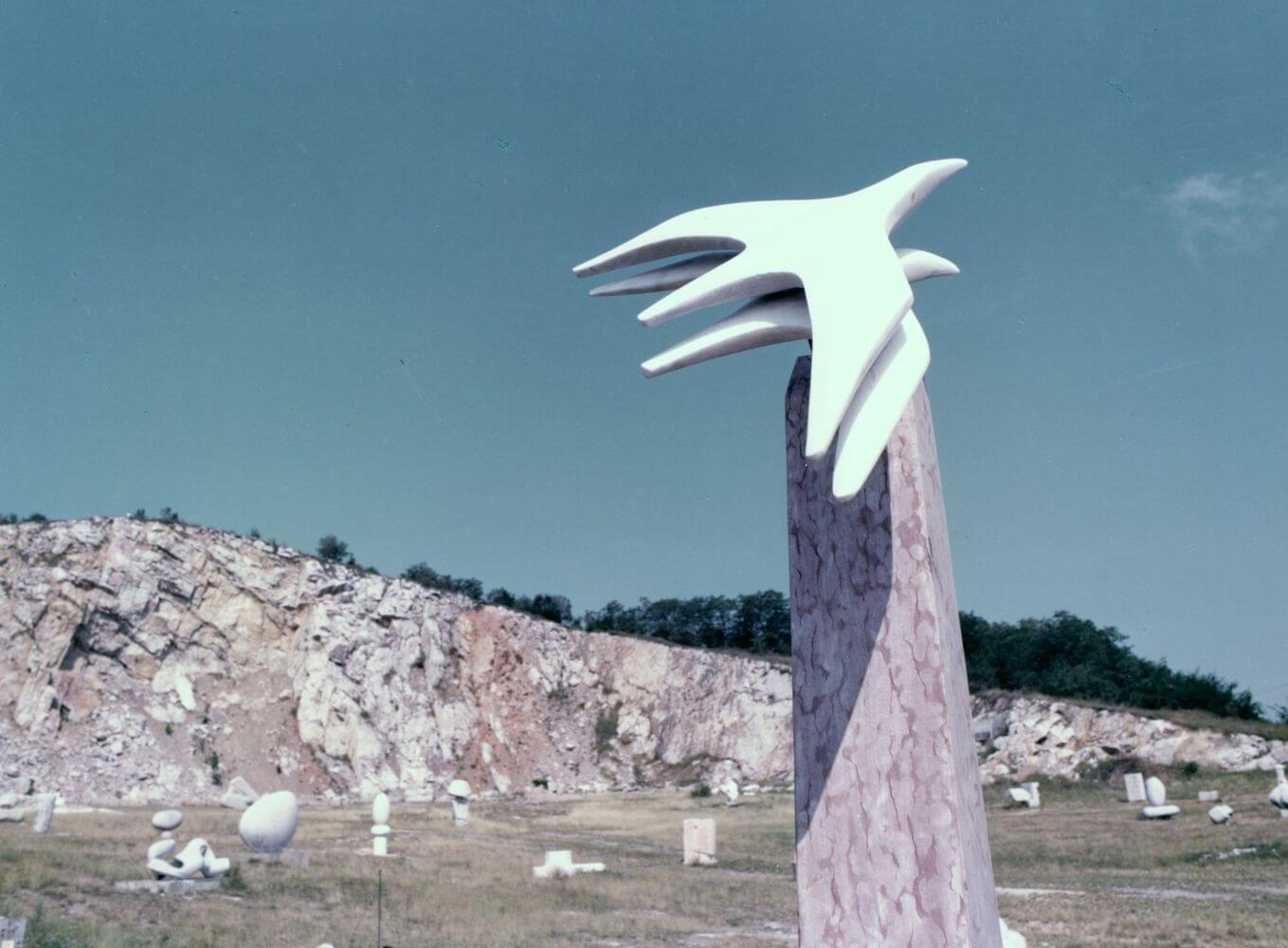Karen Kiss anthropologist/archivist based in Budapest
Where the objects that surround us every day are coming from? Who makes them and what are they made of? Anthropologist Igor Kopytoff (1986) most famously coined the concept’ object biographies’ highlighting how things go through long journeys and various life stages, many of which we are unaware of when we buy them. Imagine buying something new in the supermarket; its shiny surface mostly ‘hides’ what it went through before arriving to you and the work it took to create and transport it.
Kopytoff’s concept also inspired many intriguing questions and ideas on how art and artefacts are exhibited, and what museums and galleries’ conceal’ from the long life of the exhibited pieces.
How much can we learn about artworks life in the’ white boxes’ of galleries? What was the artist’s process of creating it and in what environment? Where are the materials coming from?
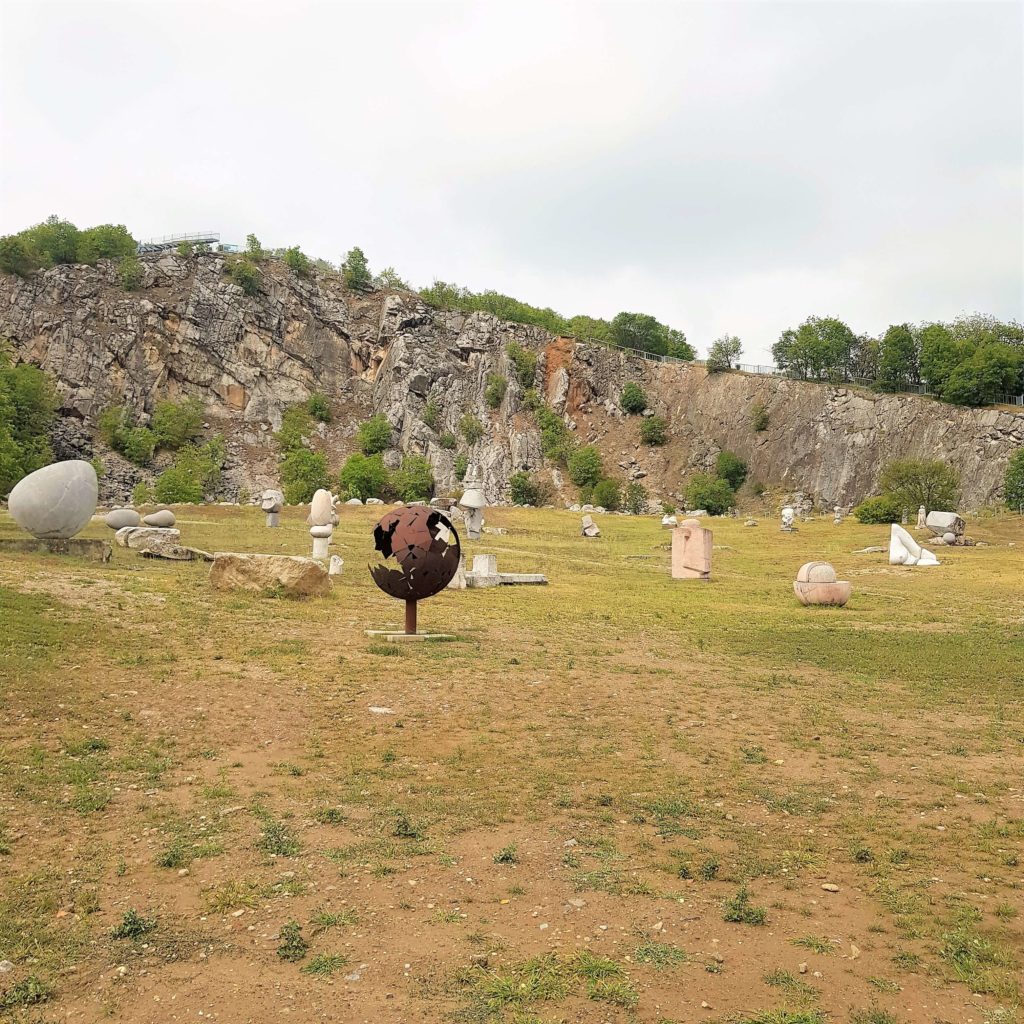
An alternative approach
The Nagyharsány Statue Park brought a unique approach, combining the exhibition space and’ studio’ into one, with artworks that are materially linked to the site. The open-air gallery is based in a former stone mine in Nagyharsány in the southern Villany wine region in Hungary. In front of the impressive backdrop of the quarry’s rock wall, the gallery features a significant number of mostly modernist stone statues scattered around in the vast space surrounded by nature and a magnificent view to the nearby wineries.
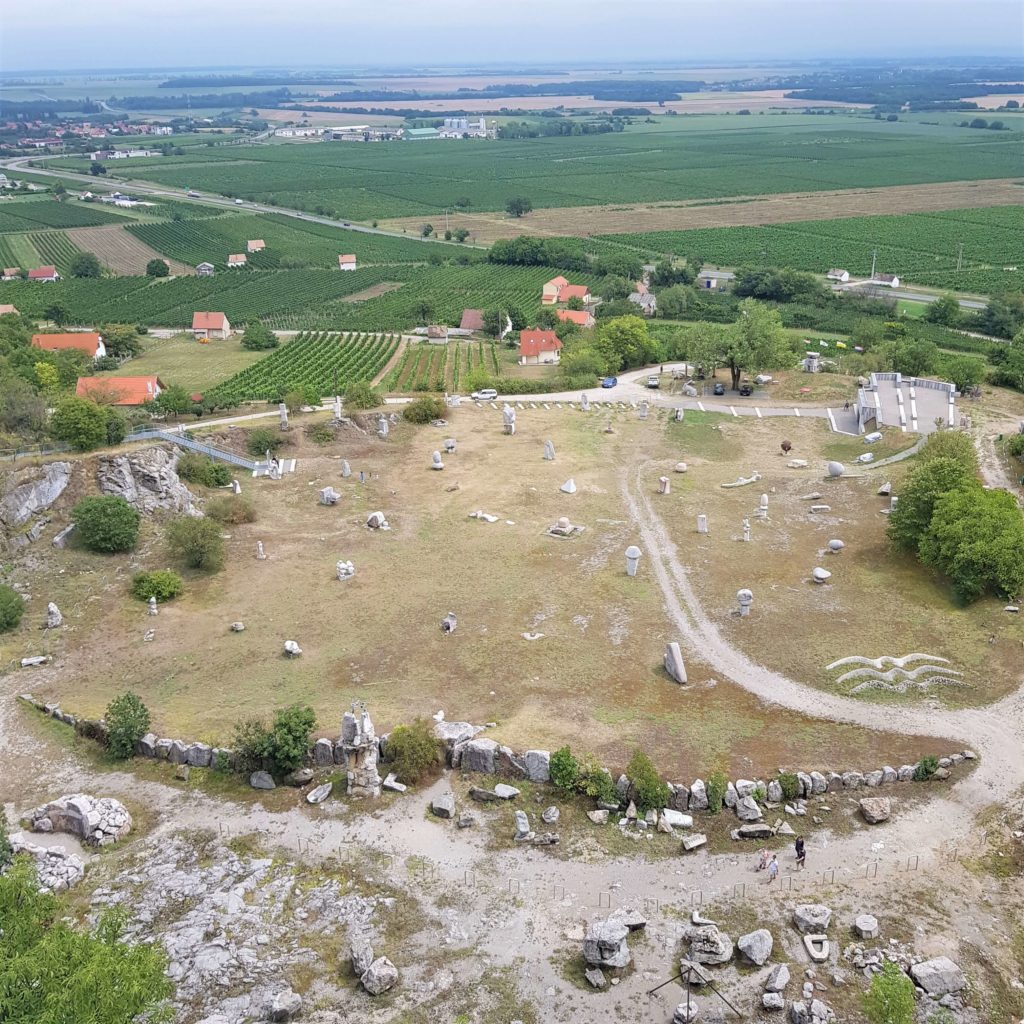
Many of the pieces are made from locally sourced grey limestone, the same or similar to what used to be mined at the quarry, showing the next stage in the material’s life and study the various forms it can take depending on how the artist manipulates it. The geometric, often abstracted shapes often feel like unique, unusual extensions to the ‘natural’ stones and rock walls surrounding them and the various shades of grey harmonise with the greenery around. Some of the artworks are so materially connected to their site that they literally conjoin into the rock walls of the quarry.
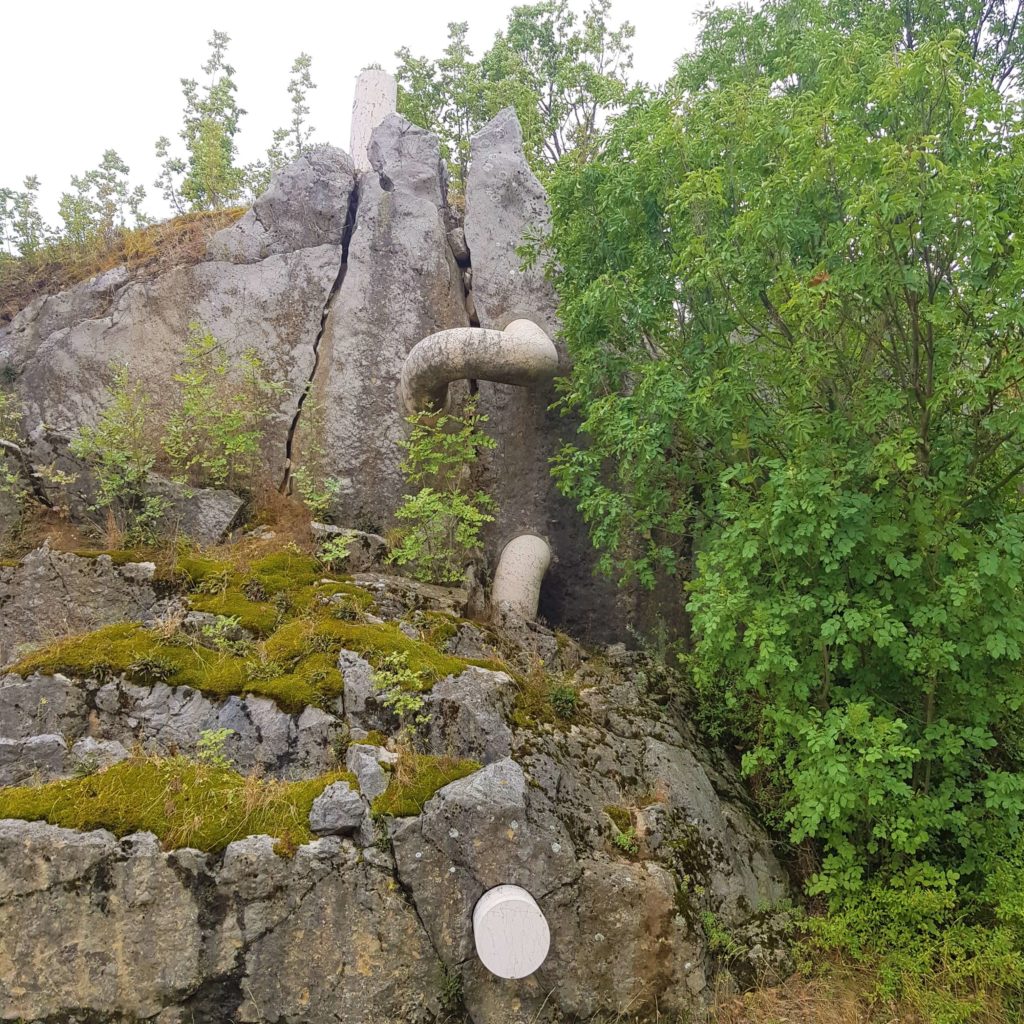
Then… and now
The project started as a creative symposium by young sculptors, most Sándor Rétfalvi in 1967, creating unique pieces going against the official aesthetics prioritised by the Communist regime. From the following year on, it became a regular summer art colony, with artists taking up residence in a nearby villa. In their foundation document, they stated that the creatives participating in their project would need to donate one of the pieces they created here to the open-air exhibition, laying the foundations of the current collection. Throughout the years the project expanded, becoming an international space for sculptors to connect and create together. In 1991 it became the site of an Arts Master’s School where art graduates could further improve their skills. This course later became the base of creative arts MA programme of the nearby Pécs University, further growing the collection. In 2009 it gained cultural heritage protection status.
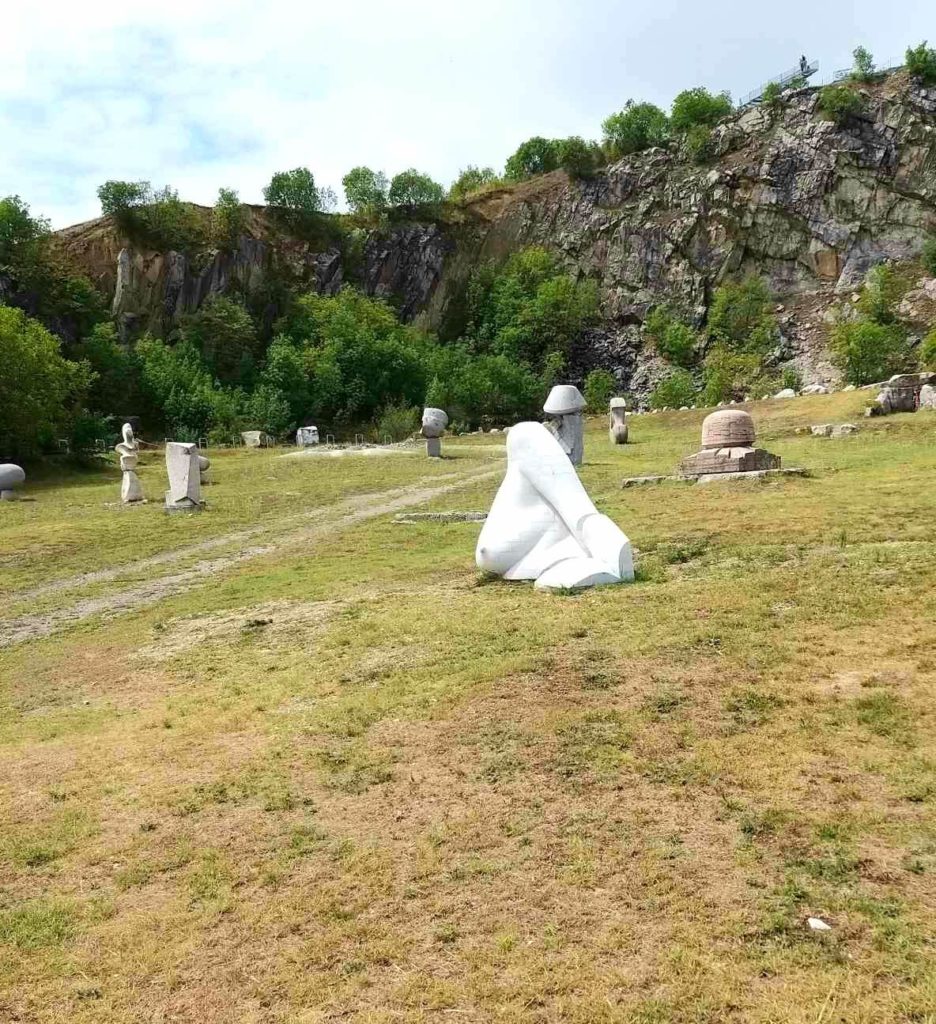
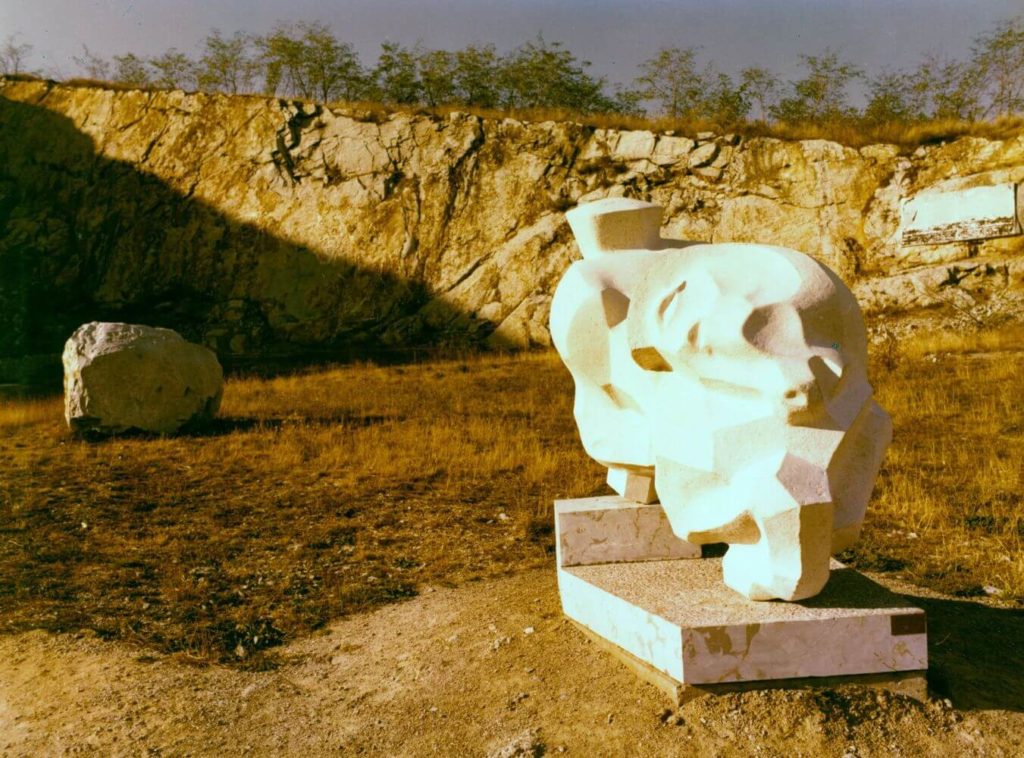
The late 2000s brought some funding difficulties to the projects, endangering the maintenance of the art colony. However, since it became the site of other creative endeavours as well. It hosts Ördögkatlan a summer festival featuring independent, alternative theatre. During my visit there were even small pieces of stone – maybe left there accidentally- organised into curios shapes by visitors showing how new audiences are keen to experiment and interact with this unique site.
XXXXXXXXXXXXXXXXX